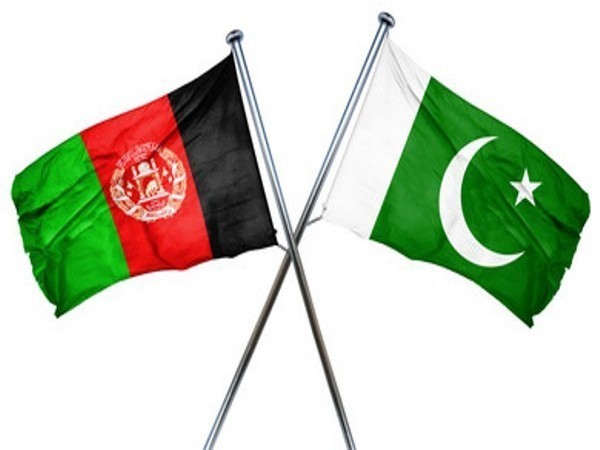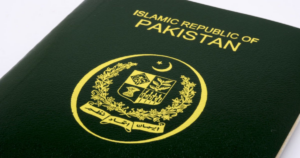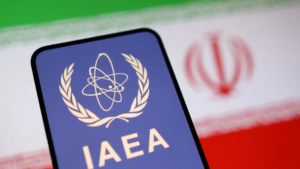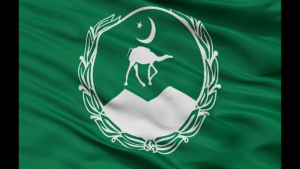
If the Afghanistan is captured by Taliban fully, the Afghanistan and Pakistan will go under a war and it will ruin the relations between the two countries forever.
The Afghan government, established on the heels of the US-led invasion in 2001, is at a critical juncture and will need to decide on how to respond best to the worsening situation as more cities and districts fall. Old wounds and nationalist sentiments could be ignited which could lead to a direct war with Pakistan and which could drag the US back into the AfPak region. Both nations have had an uneasy relationship marked by shifting alliances, general distrust, betrayals, paranoia, and fear.
Pakistan, with its double role in both supporting the US-led efforts in Afghanistan as well as enabling the Afghan militants, has become a common scapegoat for Afghans. Overtly, the Pakistani state and military leadership support a peaceful and stable Afghanistan next door, but covertly the reality has been understood to be different. It is a known fact that the Afghan Taliban have sanctuaries and safe havens in Pakistan, and they enjoy massive propaganda, funding, and recruitment support in the country of over 200 million. Pentagon Press Secretary John Kirby recently called the safe havens in Pakistan a historical problem, where the Afghan Taliban replenish, retrain, and refurbish themselves. The Afghan Taliban in Pakistan have not received the same wrath and crackdown from the Pakistani state as the Pakistan Taliban received through operations such as Zarb-e-Azb.
While the velocity and impact of current Pakistani state support to the Afghan Taliban is questionable as compared to the initial support given to the Taliban regime in the 1990s. Nevertheless, this notion of support has yielded much hatred and exaggerated bias against Pakistan, and more specifically of its military and intelligence bureaucracy. In Pakistan, likewise, similar biases and sentiments have persisted against Afghans and the Afghan government. Nationalists on both sides are eager to exploit this critical moment, and any mishap can result in fateful results.
With the Afghan conventional military struggling against the Taliban, the casualty figures for the Afghan National Defense Forces continue to rise as noted in the recent massacre of 22 Afghan commandos. Furthermore, Afghan civilian casualties are up in record numbers, causing more elevated anti-Pakistan sentiments. This presents a major challenge for the Kabul administration. Out of desperation, the administration, through its networks in the tribal areas of AfPak, can turn the enormous anti-Pakistan sentiments of the populace into an armed conflict by directly and indirectly igniting a war with Pakistan. In fact, a war with an external entity (Pakistan) can unite the different ethnic and militant groups in Afghanistan and could lead to the survival of the current Afghan administration.
The Unfinished Business of The Durand Line and Taliban
The main crux of Pakistan’s actions in Afghanistan and hence of Afghanistan’s meddling in the tribal areas of Pakistan has been the Durrand Line issue. Given its experiences with the East Pakistan ethnic war that led to the establishment of Bangladesh, Pakistan’s worst fear is another ethnicity-driven conflict that leads to more partition. Pakistan does not want nor trust a nationalist establishment next door, which can ignite a Pashtun or Baluch insurgency at home. Hence, Pakistan sees the Afghan Taliban as a more friendly regime compared to a nationalist Afghan one. Pakistan is happy with a proxy neighbor that worries less about borders and more about subjective Shariah implementation and one which will make it easier to control the long porous border. In the ideological world, Pakistan’s conservative influence resonates with the political aspirations of the Afghan Taliban group. Furthermore, a friendly Afghanistan’s Taliban-run foreign policy will be beneficial to Pakistan to leverage in the region in its own separate rivalry for influence against the Indian state through its long-held concept of gaining “strategic depth.”
For Afghans, the Afghan Taliban are just one more militant group in the arena long with plenty more in the country as multiple militant and ideological groups exist. Almost every militia or a warlord in Afghanistan uses and justifies their actions with Islamic reasonings, so the question begs what difference is the Afghan Taliban group bringing to the table. The current Kabul administration is also based on Islamic law and has an Ulema council that it works with and seeks advice from. Sharia is the dominant form of the current Afghan Constitution. Almost all members of the Afghan government, military, and civic society are Muslims as they come from the same conservative tribal and civil societies that nurture the Afghan militants. For Afghans, it doesn’t make sense to support and promote one specific militant group.
What Can a Desperate Afghan State Do Against Pakistan?
As Badal “revenge,” Afghanistan can guarantee Mutually Assured Terrorism. Afghanistan, through its long historic networks in the tribal lands, can easily turn to support guerilla and insurgents’ movements to destabilize the Pakistani state and society. Afghanistan, through NDS, can ramp up support for the Baluch insurgents and fuel more ethnic tensions in Pakistan as well as ensure terrorism and militancy is at large and reverse Pakistan’s economic growth. Afghanistan can covertly target the Gwadar port project and dent Pakistan’s ambition to become a regional transshipment economic hub. Afghanistan knows Pakistan needs the territory and economic activity of CPEC to ensure its sustained growth and any damage to it can adversely affect the socio-economic fabric. For Afghans, if the Pakistani state – through its support of the Taliban – did not allow Afghanistan to fully benefit from the fruits of US/NATO efforts then why should it allow the Pakistani state to fully benefit from the fruits of Chinese efforts. If such targeted operations continue against Pakistan and its economy, Pakistan will be forced to carry out cross-border conventional military incursions – which will then receive direct symmetric and asymmetrical response from the remaining Afghan forces and militias leading to full-scale war. Not only will it be a catastrophe for the region, but it will also have a great international impact with the potential to drag the US and NATO back into the AfPak region – who will not only worry about containing the war but also maintaining the safety of the nuclear weapons in Pakistan.
Conclusion
Pakistan – with its conventional military might, and Afghanistan – with its long experience of symmetrical and asymmetrical warfare, can mutually destruct each other if they choose to continue the war footing. It is best for both nations to pursue a non-confrontational stance as allies in the region and pursue a diplomatic approach for peace, economic growth, and stability. Pakistan and Afghanistan can in fact work together in the areas of developments in information technology, transport, and communications, medicine, trade, and commerce. The concept of ‘strategic depth’ and “strategic militancy” and ‘Loy Afghanistan’ will need to be shelved for the better good. Now is the time to be covertly and overtly sincere as the stability of South Asia and the region beyond depends on real peace between Afghanistan and Pakistan.






